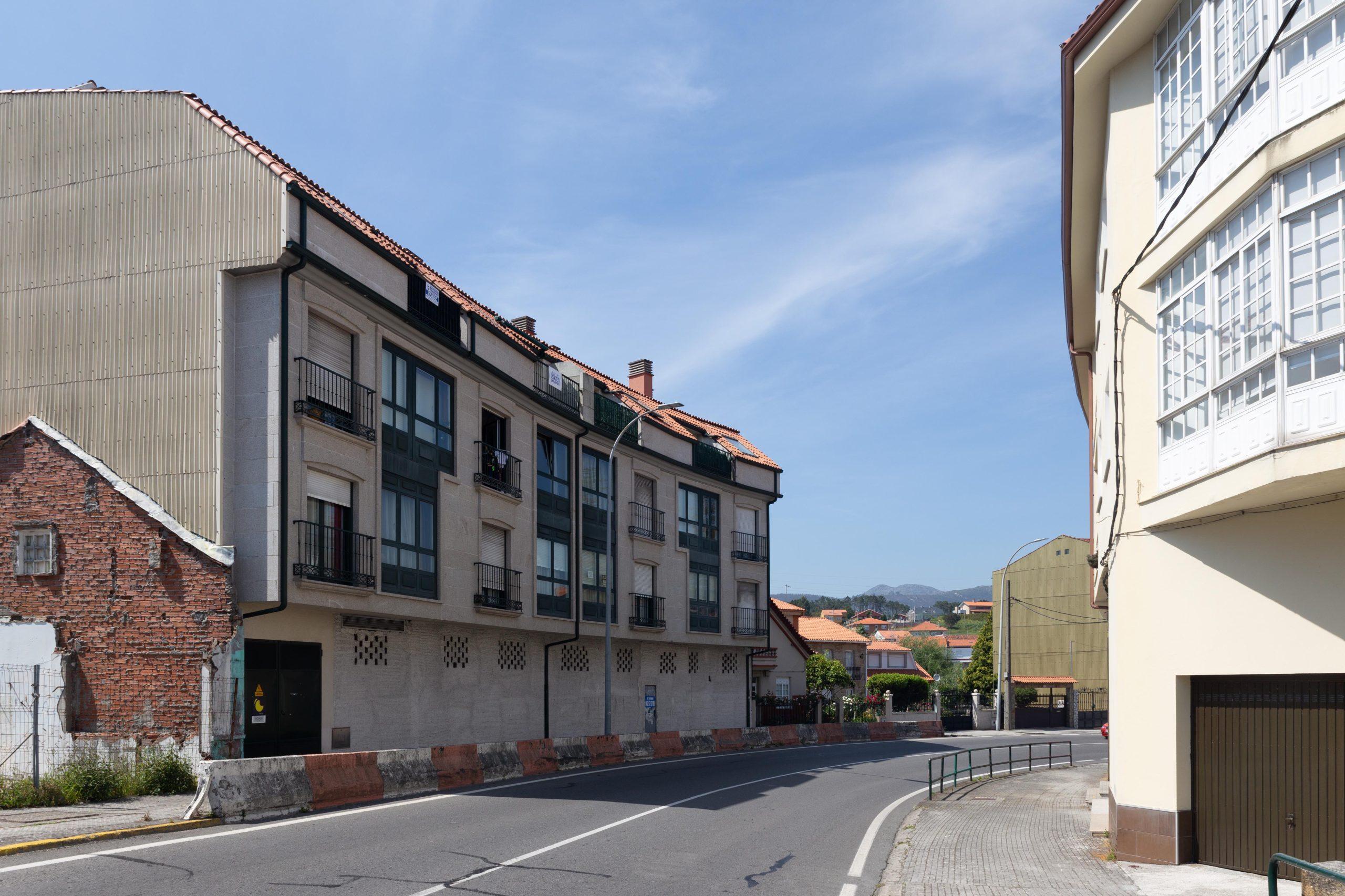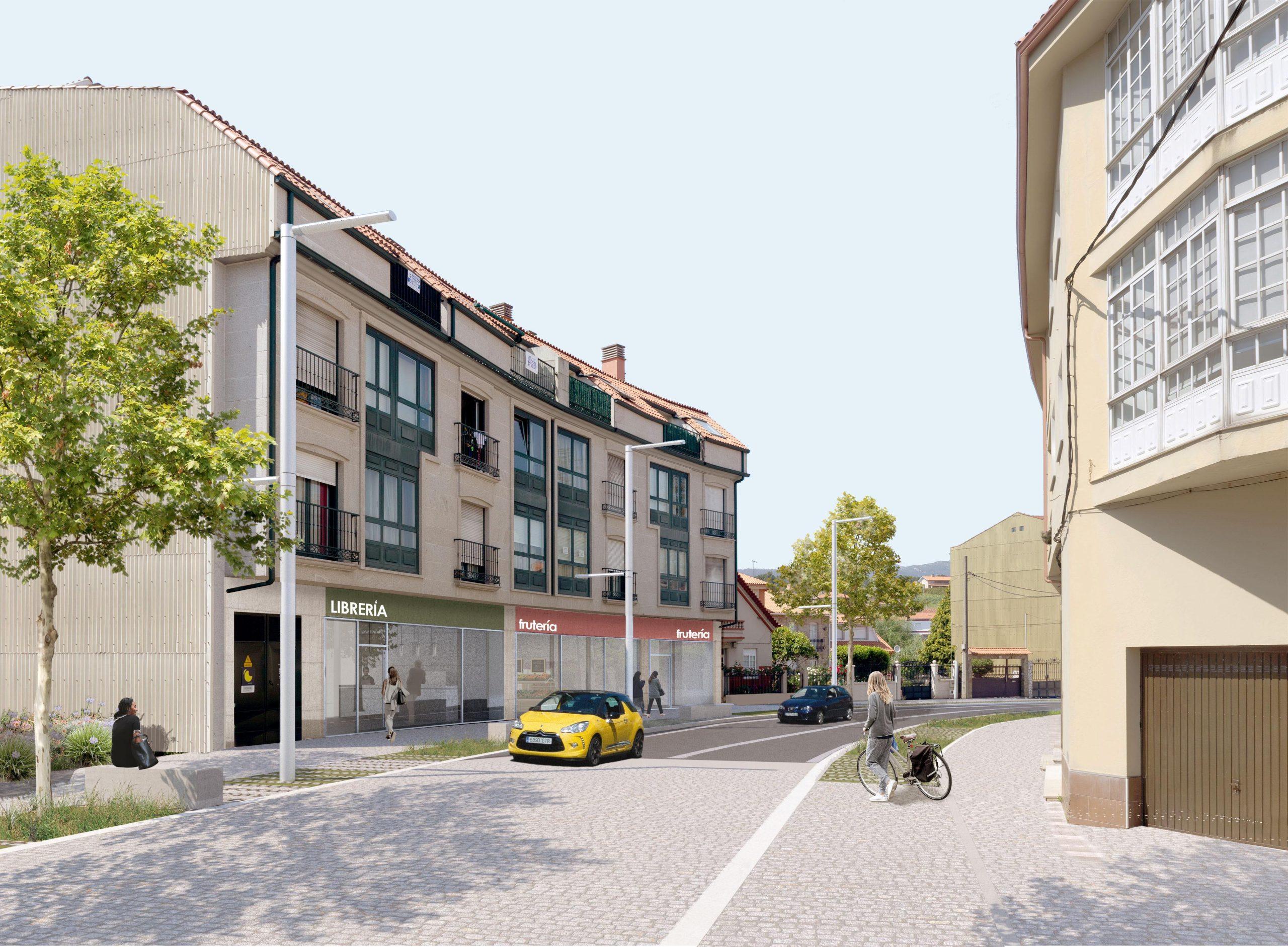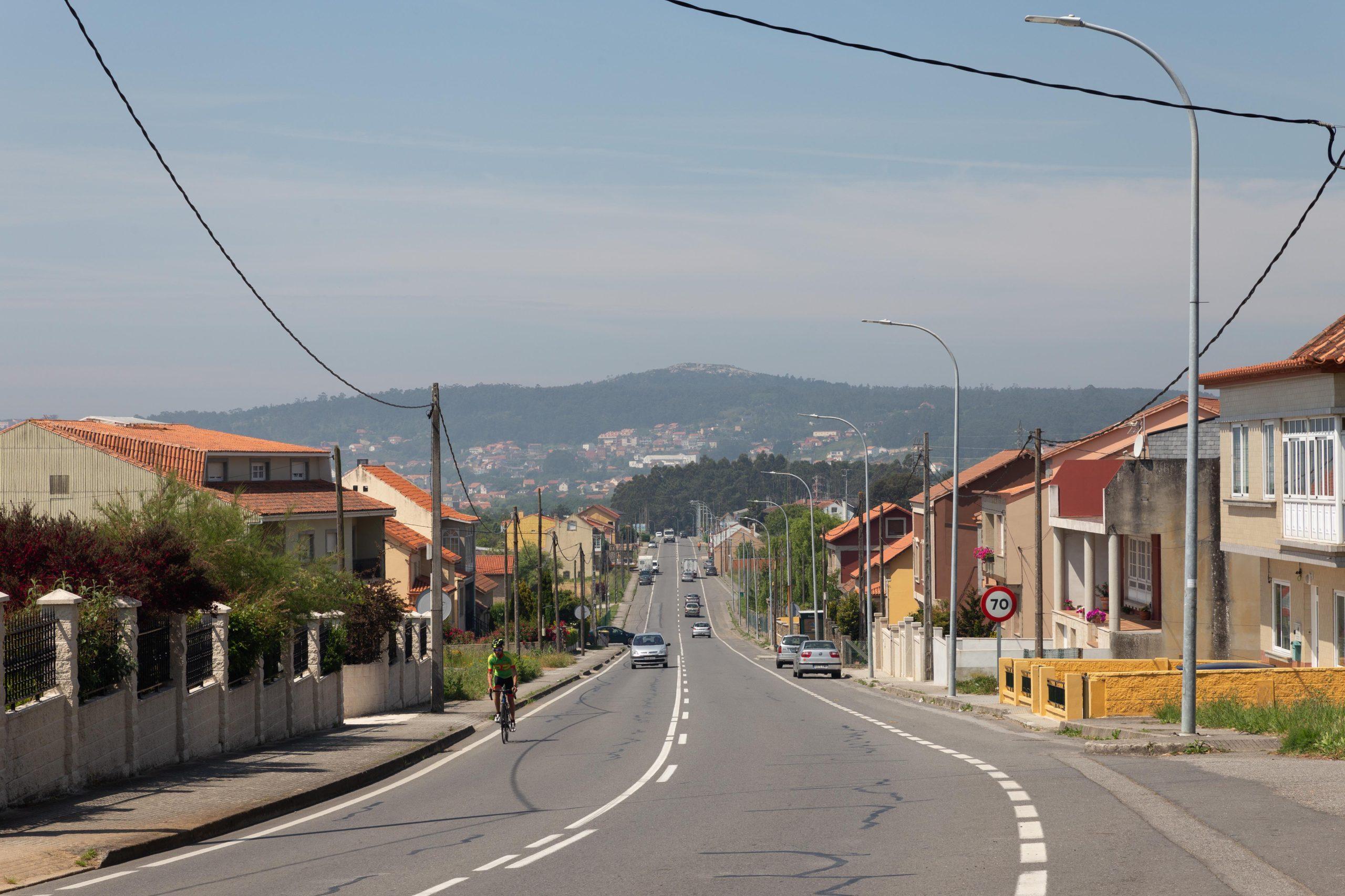From road to street: Palmeira
Reversing the impact of traffic in our villages and generating safer and more attractive environments is the objective of the pilot project of Palmeira, which begins a collaborative path with the Xunta de Galicia for the transformation of the AC-305 road.


AC-305 at the intersection with Calle Barreiro.
Based on the analysis, field work and citizen participation, 7 strategies are applied for the integrated redesign of an infrastructure that splits the town in two, concentrating accidents and eroding the local image and identity.
In 2018, the Fundación RIA elaborates a pilot project of urban regeneration in some of the roads owned by the Galician Agency of Infrastructures as they pass through a population center. Taking as a reference the analysis work previously developed, Palmeira is identified as a place where this project could have a greater impact, both in the town itself, as well as for its ability to exemplify ways of approaching the planning and construction of public space that could be replicated in other locations.
Year
2018
Promoter
Xuntade Galicia - Consellería de Infraestruturas e Mobilidade - Axencia Galega de Infraestruturas
Location
Palmeira, Ribeira, A Coruña
Team and collaborators
Fundación RIA

Change in the character of the street - Historic.

Changing the character of the street - News.
To provide the best level of precision in the analysis, existing information is complemented by field work. The collection of information and complementary fieldwork is necessary to establish the broadest possible understanding of the factors affecting the different scales of the territory. Working with reliable information is a cornerstone for the foundation to present objective recommendations and proposals.
The most general intervention aims to transform the character of the road along its entire length. It is intended to make a global transformation of the character of the road by reducing its maximum speed in the urban section to 30 km/h and establishing two transition sections at its ends at 50 km/h from the interurban section or crossing limited to 70km/h.
The speed limitation by means of signs is accompanied by a transformation of the road section, which progressively reduces the lane width from 3.5 m in the crossing to 3 m in the urban section. In turn, this lane reduction allows the extension of the pedestrian area and the introduction of a green strip along its entire length. This flexible strip can be adapted to different contexts, from trees that, for example, mark the "entrance door" to the urban environment, to street furniture and special use areas, such as bus stops, which allow the creation of "rooms" and a more domestic atmosphere.
It is these longitudinal actions that allow the integration and provision of underground urban services, such as the undergrounding of the power lines, or a sustainable urban drainage system integrated into the street design.
The more punctual interventions are intended to fragment the project and allow its implementation in phases. Instead of concentrating a general intervention that affects the entire section of the street along the entire length of the urban section, it is decided to concentrate the actions in short sections, which at a global level will generate the desired effect at a lower cost, and with the capacity to be implemented in successive interventions.
These interventions are carried out at identified strategic points where the desired effects are most relevant. The points that mark the entrance to the urban center; the most dangerous intersections that generate transversal connections; or places of special uses, such as bus stops; are chosen as priorities to concentrate the efforts of the project.


Proposed change to AC-305.




